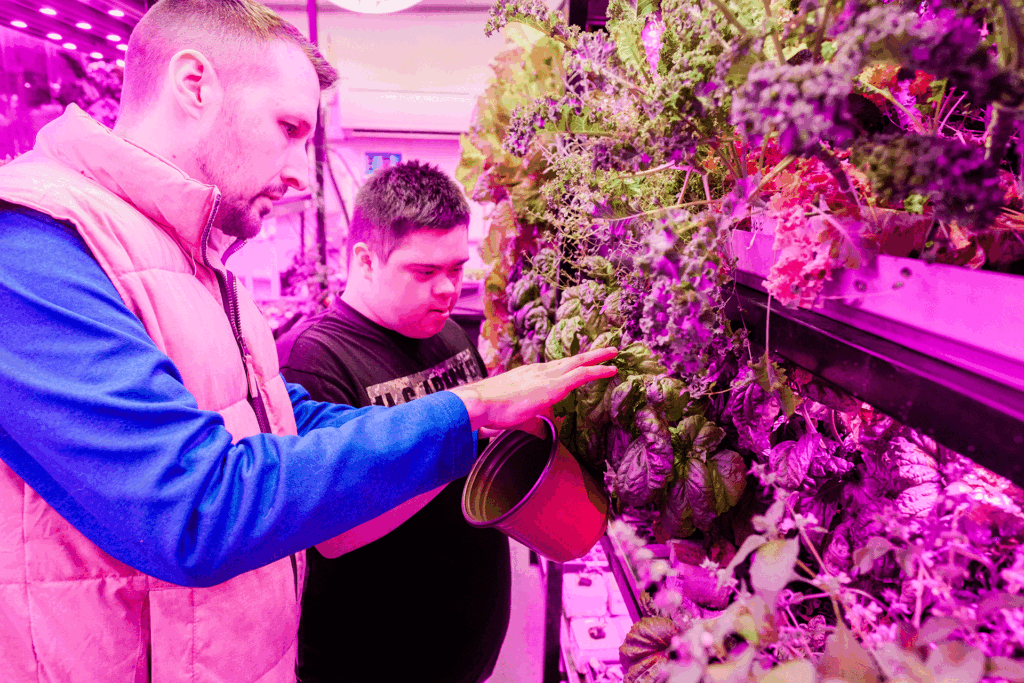Many of you have probably read about flipped classrooms—a new instructional model that brings traditional homework into the classroom and students watch the lecture at home the night before. This allows teachers to spend more one-on-one time with students. With its one-on-one intensity, the flipped classroom could be a boon for special education students, but not without some adaptations first.
Earlier this week we spoke with Pittsburgh’s Aaron Sams, coauthor of “Flip Your Classroom: Reach Every Student in Every Class Every Day.” He explained that, although flipped classrooms are an innovative approach to teaching, they are still only the beginning.
“What we’re finding these days is that a lot of teachers are using the flipped classroom model as just an entry point, but no one really stops there. If kids want to work ahead, they’ve got all the instructional content they need. And teachers’ time can be freed up to help the students who struggle,” said Sams.
“We call this evolved version a ‘flipped mastery model’ based on work by Benjamin Bloom. He believed that most students can reach mastery if given enough time. With digital video, content delivery is much less of an issue, and we are able to just meet kids where they are.”
While Sams and his colleagues continue pushing the model forward, other experts and educators are investigating more surprising benefits of this innovative way of teaching, such as its effect on special education classrooms.
“What’s different now is that, as technology pervades all aspects of the classroom, special education teachers need to make a decision about whether they’re going to stay on track with specialized assistive technologies or adopt some of the mainstream ones that general education students are using,” explained writer Dian Schaffhauser in a recent post for THE Journal: Transforming Education through Technology. “The latter approach appears to be winning right now. In many situations the mobile devices, apps, cloud-based computing, and flipped classroom approaches that are finding wide acceptance in general education are also finding a home among the tools used by special ed experts to help their students succeed.”
Schaffhauser explained how “mainstream technology” used in general education classes has different benefits in a special education classroom. “The most effective approach for flipping the classroom for special ed students isn’t, in fact, all that different from doing it for general ed students,” she said. The flipped model serves special education students particularly well, educators have noted, because students can watch the content repeatedly until they get it, which is helpful to those who need extra time to learn new concepts. But the benefits can extend beyond that.
Schaffhauser also spoke with Andrea Prupas, the head of inov8 Educational Consulting, whose firm specifically addresses special education and technology.
Prupas pointed out that instead of using these new tools to “do things differently,” special education teachers need to use the same technology applied in general education classrooms to “do different things.” According to Prupas, a “truly flipped approach” starts by looking at students’ specific needs.
“We argue that the benefit is really for the collaborative and active learning aspects in the classroom,” Prupas said. “The teacher is more of a facilitator.” For example, if a student with autism needs to work on social skills specifically, a flipped model allows the teacher to focus on those skills in the classroom by setting up activities that are team-oriented and collaborative. In that case, the instructional videos might show social skills such as taking a phone call or performing a transaction in a store. Then, in class the students would work on the skills together.
Although the jury is still out on whether flipped classrooms are more effective than other forms of teaching, intuitively, it would seem that those students who are most likely to fall behind or who need the most time on a topic would benefit from having more time with the teacher. Time will tell.
